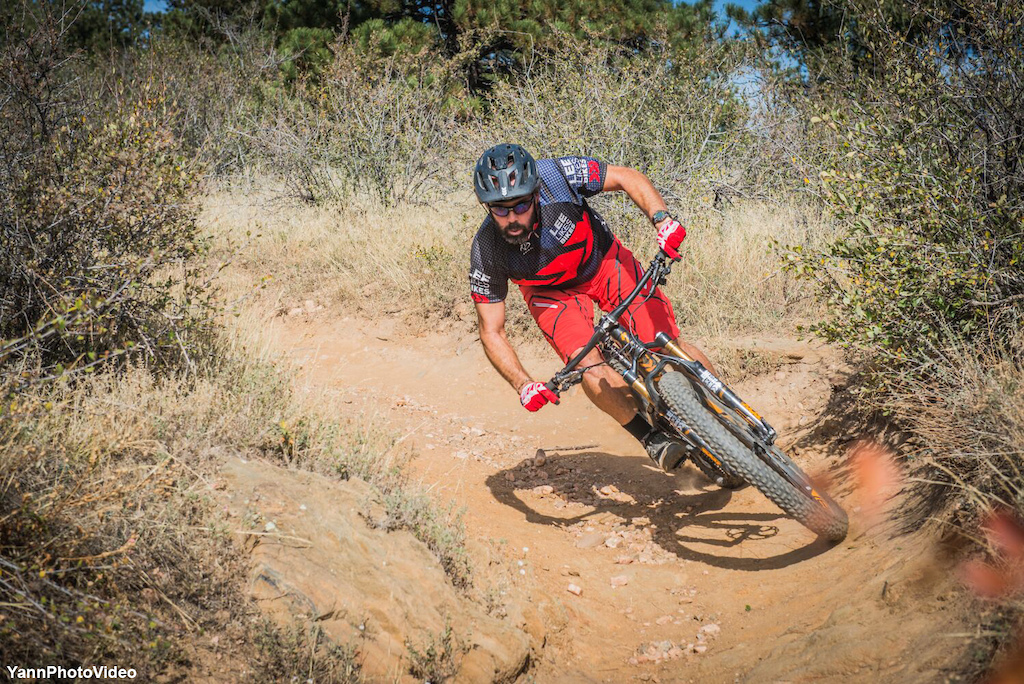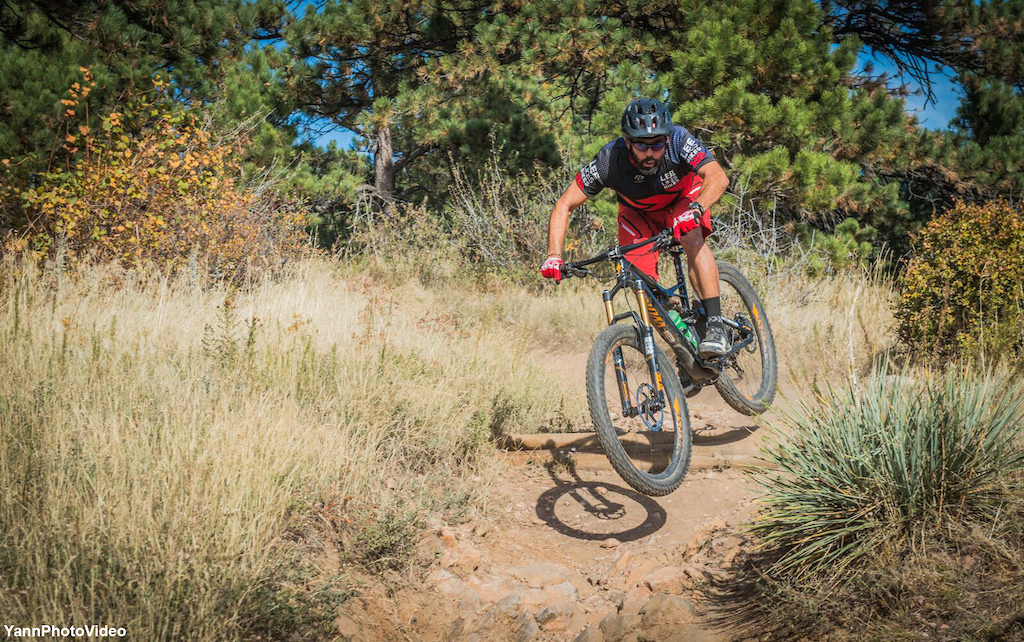Quick and easy way to find your ideal MTB handlebar width
Recently Richard Cunningham posted Handlebar Width vs Handling – Are Your Bars Too Wide? The article started a great conversation about ideal handlebar width. I’ve been studying mountain bike setup for years; I figured this is a good time to share some thoughts about handlebar width.
Are your bars the correct width for you?
Unless you have a custom setup, the handlebar width that comes with your bike is probably determined by:
Fashion. What is cool right now?
The style of bike. Is it a cross country race bike or a trail bike or an enduro bike or a downhill bike?
What the bike company thinks it can sell. What width handlebar do people expect on a bike like this? What width looks cool? Yes, that really happens — and wider bars do look cool.

I sure thought I was cool with my 800mm handlebars, but they contributed to the demise of my shoulders.
None of those factors have anything to do with you, the rider. While most people can ride a variety of handlebar widths, the wrong handlebar width can mess up your riding and your body:
• You lose range of motion so you can’t ride down steep hills or make tight turns.
• You lose pushing strength so you can’t handle impacts at your best.
• You lose pulling strength so you can’t pump terrain at your best.
• You rely on the small muscles in your arms and shoulders, and they get tired.
• You can damage your shoulders. This I know.
If your handlebars don’t fit you:
At best, you’re not riding at your potential.
At worst, you’re damaging your body. If you’re young and healthy you might not feel this. Yet.
It’s all about the elbows
When you pull the handlebars, your elbows tend to draw inward. This happens in the troughs between bumps and in the bellies of well-pumped turns. It doesn’t look very cool, so you rarely see photos of this position.
When you push the handlebars, your elbows tend to flare outward. Many sick action photos show a moment of pushing, for example going over a rock or off a ledge. Elbows tend to be wide in these moments; it’s easy to think they should always be wide.

Sam Hill is pushing across the top of this rock, and his elbows are out.
When you shred, your elbows cycle inward and outward. This movement is a natural part of many activities (consider rowing and punching), and it’s a natural part of pumping terrain.
Most of the time, your elbows should be directly behind your fists. For this reason, elbow width and handlebar width should be roughly the same.

Pumping through a turn, elbows and hands at the same width. Braaap!
Calculating your sweet spot handlebar width
While teaching thousands of riders over more than a decade, I’ve learned a lot about how bodies and bikes work together. I’ve also worked closely with the doctors at REVO Physiotherapy and Sports Performance in Boulder, CO to understand the biomechanical relationships between handlebar width, shoulder function and shredding.
From this work, I’ve developed the RideLogic sweet spot handlebar width calculation. Starting with your gender and height (and assuming average proportions) this calculation gives you a handlebar width that:
• Gives you the range of motion to shred downhills and carve tight turns.
• Supports huge pushing strength for aggressive riding.
• Empowers pulling strength for pumping bumps and turns.
• Uses the big muscles in your torso, rather than the small muscles in your arms and shoulders, so you ride longer and harder with less pain.
• Keeps your shoulders stronger and healthier.
Finding the right width will make you ride — and feel — so much better. And it’s so easy.
Are you ready?
To get your RideLogic sweet spot handlebar width in millimeters:
If you’re male, multiply your height in millimeters by 0.440.
If you’re female, multiply your height in millimeters by 0.426.
Simple.
Bonus: These numbers are almost identical to the median and average rider heights/bar widths in Richard Cunningham’s story. The bar widths are relatively wider for the female riders — but they are not ordinary people!

When you don’t know what’s coming, you want a neutral position. Proper handlebars help.
Dialing in your handlebar width
The RideLogic sweet spot handlebar width is your maximum biomechanically recommended handlebar width based on your height (assuming average proportions).
There are lots of advantages to making your bars narrower: more range of motion, more pulling strength and better shoulder health, to name a few. For most riders, the usable range is between sweet spot width and about 5 percent less than sweet spot width (for example, 750 to 710mm).
Making your bars wider is almost all disadvantages: less range of motion, less pulling strength and worse shoulder health. If you’re not a big person, there’s a good chance your bars are too wide.
If you’re very small, you might have trouble getting your bars narrow enough while fitting all of your controls. To make more space, feel free to cut your grips narrower. They’re probably twice as wide as your hands.
If you’re very tall, they don’t make handlebars “wide enough” for you. That’s OK: It’s better to err toward narrow than toward wide.
If you have shoulder injuries, I encourage you to try narrower bars. My sweet spot handlebar width is 760mm, but I ride at 750mm and often narrower, especially in pull-intensive situations like technical climbing, sprinting, pumping and jumping.
If you’re a reactive rider — the kind of rider who bashes into bumps and just tries to hang on, you might prefer wider bars. The more proactive your riding style, the more likely you’ll prefer bars at sweet spot width or narrower.
If you ride in trees, make sure your bars fit. Duh.
I hope you find this tip of the iceberg helpful. You can learn way more about mountain bike setup in my book Dialed or at the Lee Likes Bikes MTB School. The website includes online calculators that help you precisely determine handlebar width and other aspects of setup.
Lee


Leave a Reply
Want to join the discussion?Feel free to contribute!